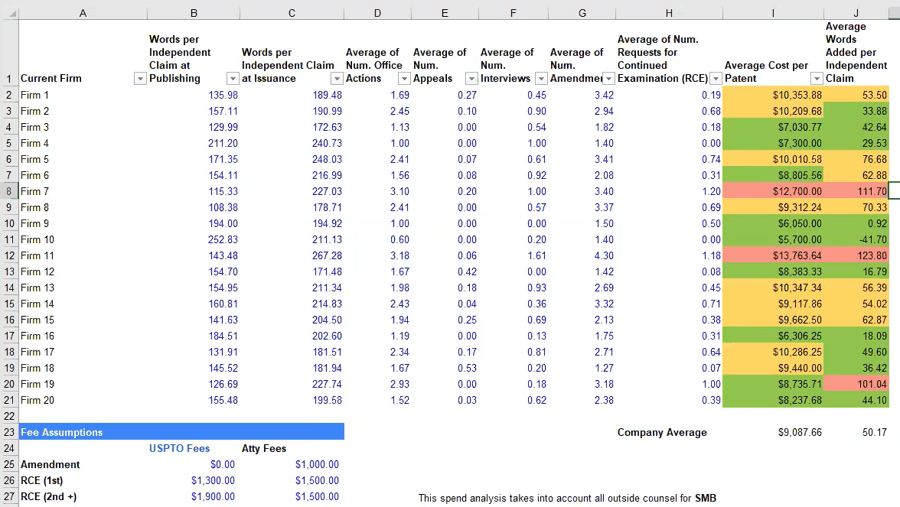There are many ways to evaluate the value of your outside counsel, whether using general success metrics or quality indicators like timeliness and ease of communication. But perhaps the most valuable indicator may be the average cost of an issued patent prosecuted by the firm.
We've discussed methods to evaluate outside counsel in previous articles, and for good reason - there are many routes to do so. Today, we'll discuss how you can use data to calculate the average cost of a patent prosecuted by your outside counsel.
The end goal of every law firm client relationship is a robust, cost-efficient patent portfolio, and a revealing metric to consider is the average cost of an issued patent prosecuted by each partner firm. With patent analytics at your fingertips, you can calculate this average and see which of your outside firms are strengthening your patent portfolio at the most affordable cost to your company.
Metrics to Get Started
Seven key metrics to help you identify the average cost of an issued patent from your outside firm:
- The average number of office actions
- The average number of appeals
- The average number of interviews
- The average number of amendments
- The average number of RCEs
- The average number of words per independent claim at publishing
- The average number of words per independent claim at issuance
How to Use the Metrics
Ultimately, the cost of a patent comes down to each action taken during prosecution. More back and forth with the USPTO means more office actions, more billable hours for the firm, and more prosecution fees. These expenses add up to the final cost of prosecuting a patent.
The first five metrics (average number of office actions, average number of appeals, average number of interviews, average number of amendments, and average number of RCEs) can be combined to reveal the average patent cost for each of your law firms. Simply multiply each office action and response type with the USPTO-sanctioned cost to determine the average.
Of course, you also need to consider the quality of the patent. This is where the last two metrics (average number of words per independent claim at publishing and average number of words per independent claim at issuance) provide some additional context.
By subtracting the average number of words per independent claim at publishing from the average number of words per independent claim at issuance, you can discover the average number of words added during prosecution per firm. More words added to an independent claim usually indicate a narrowing of the patentable scope and, in the end, a weaker patent. With this quality metric, combined with the average spend your company is paying a firm per patent, you can identify which of your legal partners provide the most quality patents at the most affordable price.
To optimize your spend, you want to work with firms that have a low average cost per patent and a low count of words added from publishing to issuance. Whether you’re working with multiple legal partners or shopping around for new outside counsel, using these metrics to compare performance ensures that you are allocating work to the most successful firm.
When it comes to evaluating legal partnerships, there are many factors at play. But these metrics are a great starting point and readily available within Juristat. If you want to see how you can build a scorecard to evaluate outside counsel performance, check out our recent webinar, How Leading In-House Teams Evaluate Outside Counsel Performance.
(gradient).webp)


